Creating a vibrant vertical garden doesn’t have to mean excessive water consumption. With the right selection of flowering drought-resistant plants, you can enjoy a stunning living wall that thrives even in dry conditions. These water-wise beauties not only conserve precious resources but also add spectacular color, texture, and ecological benefits to your vertical space. Whether you’re dealing with limited rainfall, water restrictions, or simply want to minimize maintenance, this guide will help you transform your vertical garden into a sustainable oasis of color.
Benefits of Drought-Resistant Vertical Gardens
Before diving into specific plant recommendations, let’s explore why drought-resistant vertical gardens make so much sense for modern gardeners:
- Significant water conservation compared to traditional gardens
- Reduced maintenance time and effort with less frequent watering
- Lower utility bills from decreased water usage
- Year-round visual interest with proper plant selection
- Increased resilience during dry spells and heat waves
- Improved air quality and insulation for adjacent buildings
- Habitat creation for beneficial pollinators like bees and butterflies
- Space efficiency for urban environments with limited ground area
Drought-tolerant plants have evolved special adaptations that allow them to thrive with minimal water. These may include waxy coatings on leaves, reduced leaf surface area, specialized water storage tissues, and deep root systems. By selecting plants with these natural adaptations, you’re working with nature rather than against it.
Flowering Succulents for Vertical Gardens
Succulents are the champions of water conservation, storing moisture in their fleshy leaves, stems, or roots. Many varieties also produce stunning blooms, making them perfect candidates for drought-resistant vertical gardens.
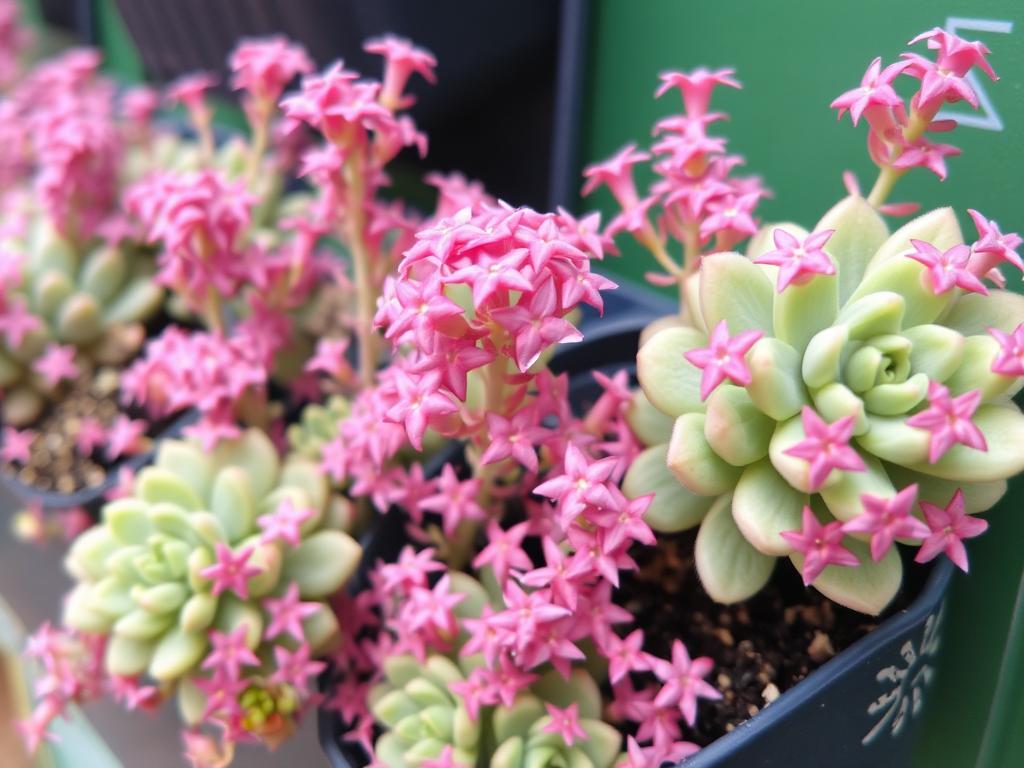
Sedum (Stonecrop)
These versatile succulents offer a spectacular range of colors, textures, and growth habits. Many sedums produce star-shaped flowers in shades of pink, yellow, red, or white that attract butterflies and bees.
- Bloom color: Pink, yellow, red, white
- Sun requirements: Full sun to partial shade
- Drought tolerance: Excellent
Plant sedums in well-draining soil and allow them to dry completely between waterings. Their shallow root systems make them ideal for vertical garden pockets with limited soil depth.
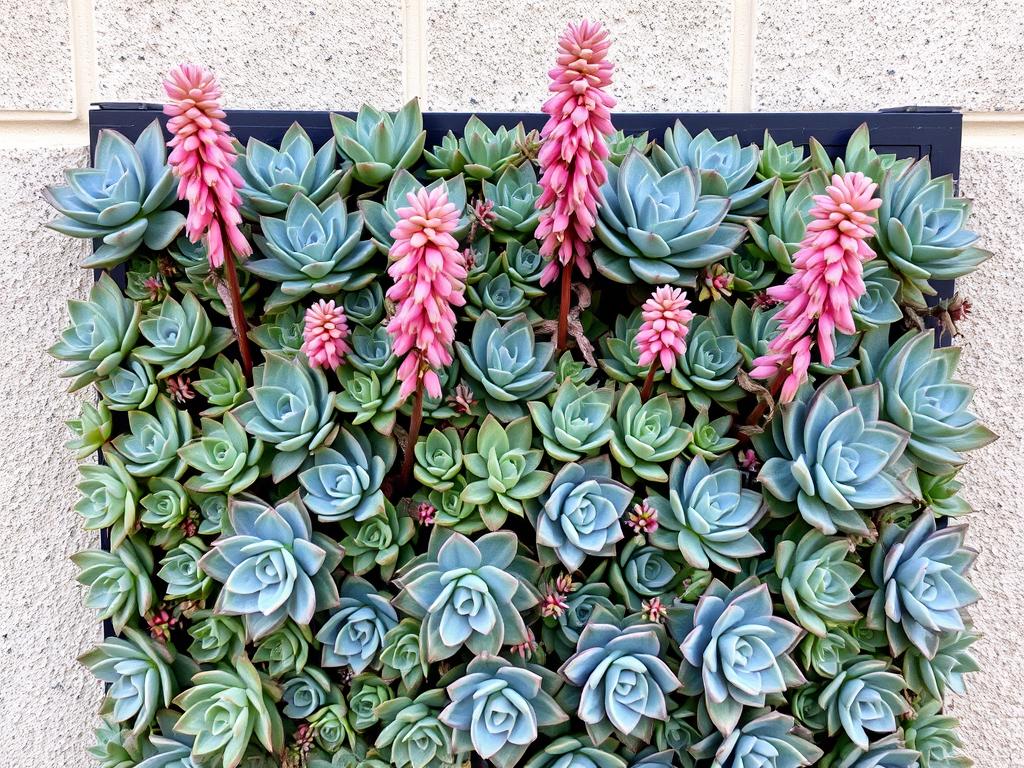
Echeveria
These rosette-forming succulents produce elegant, bell-shaped flowers on long stems. Their architectural form adds structural interest to vertical gardens even when not in bloom.
- Bloom color: Orange, pink, red
- Sun requirements: Full sun to partial shade
- Drought tolerance: High
For best flowering, place echeverias in the sunniest spots of your vertical garden. Use a cactus or succulent mix with excellent drainage to prevent root rot.
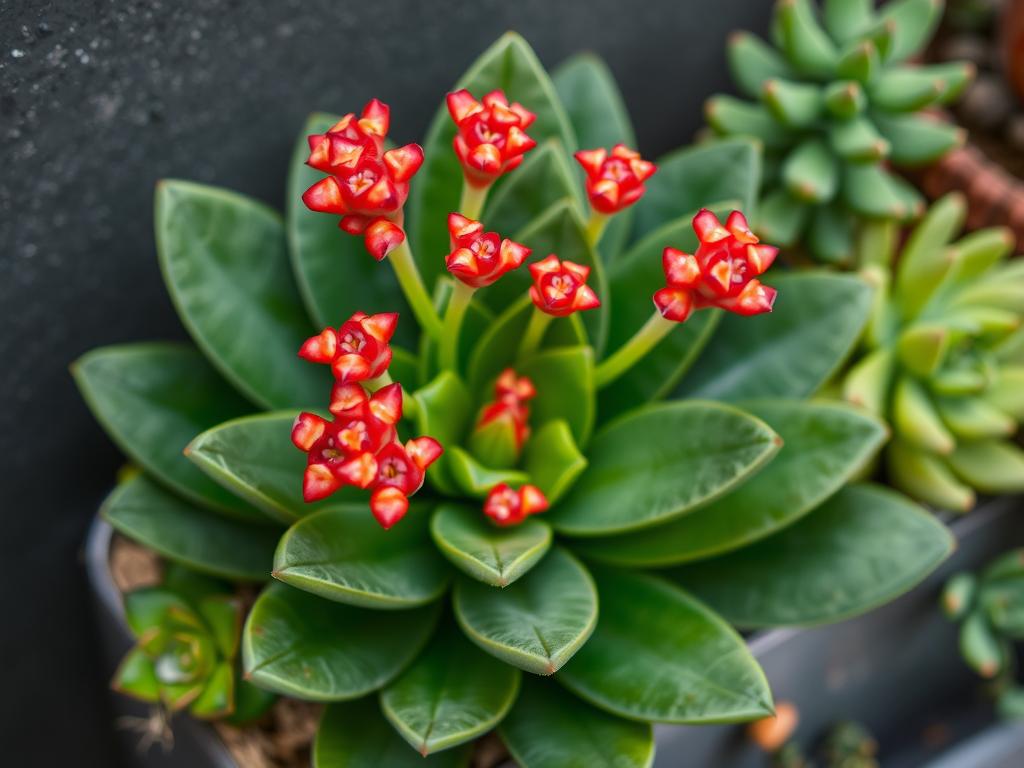
Kalanchoe
Known for their long-lasting blooms, kalanchoes produce clusters of small, four-petaled flowers above thick, scalloped leaves. They’re perfect for adding reliable color to vertical gardens.
- Bloom color: Red, orange, yellow, pink, white
- Sun requirements: Full sun to partial shade
- Drought tolerance: Very good
Kalanchoes benefit from occasional pruning to maintain compact growth. Deadhead spent flowers to encourage reblooming and prevent self-seeding in your vertical garden.
Drought-Tolerant Perennial Flowers
Perennial flowers offer the advantage of returning year after year, providing reliable color with minimal replanting. These drought-resistant varieties will bring long-lasting beauty to your vertical garden.
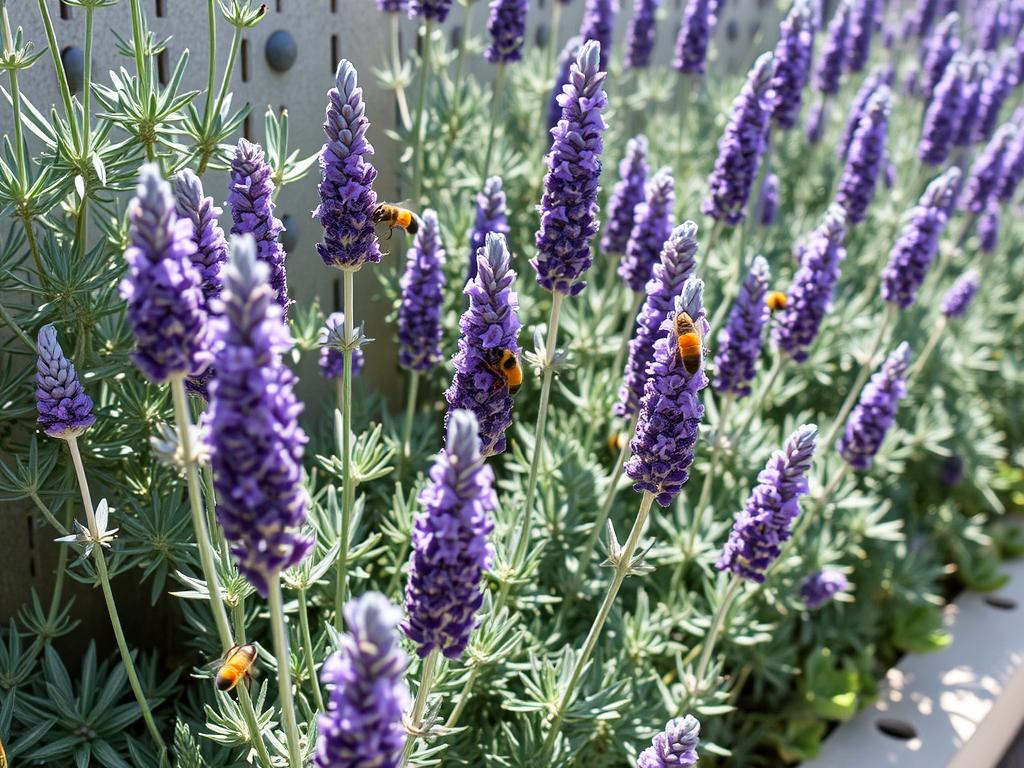
Lavender
This Mediterranean native is renowned for its fragrant purple flower spikes and silvery foliage. Beyond its beauty, lavender attracts pollinators and repels many garden pests.
- Bloom color: Purple, blue, pink, white
- Sun requirements: Full sun
- Drought tolerance: Excellent
Plant lavender in the upper sections of your vertical garden where it will receive maximum sunlight. Use a soil mix with added sand or perlite to ensure sharp drainage.
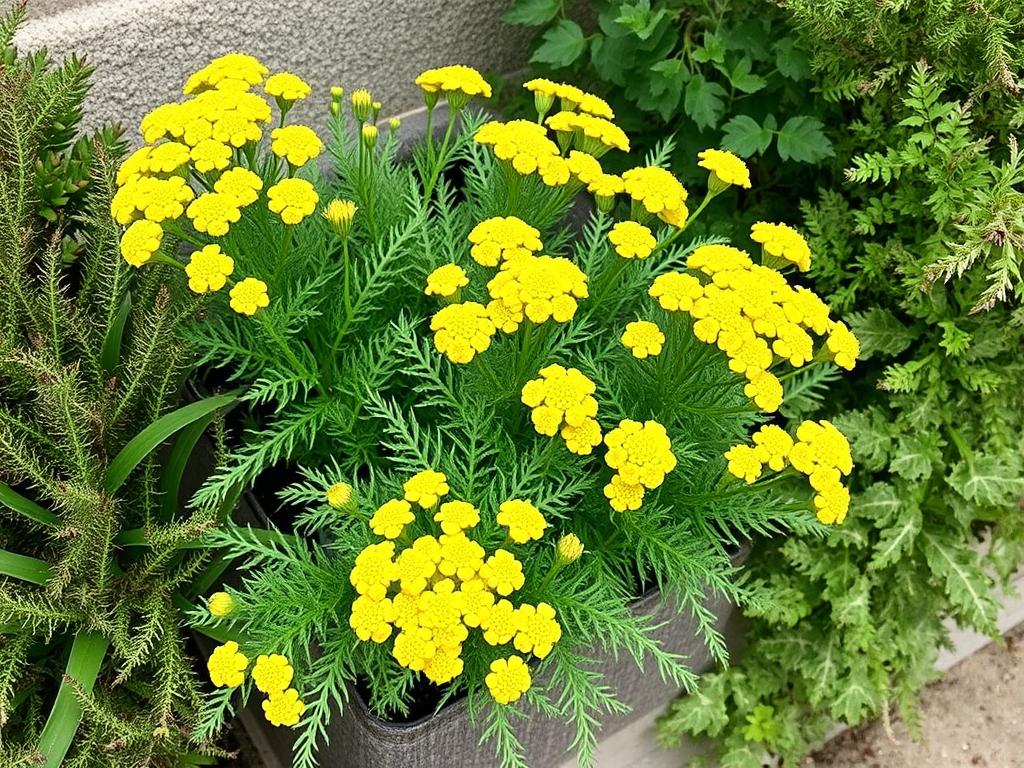
Yarrow
With its ferny foliage and flat-topped flower clusters, yarrow adds both texture and color to vertical gardens. This tough native plant thrives in poor soil and hot conditions.
- Bloom color: Yellow, white, pink, red
- Sun requirements: Full sun
- Drought tolerance: High
Yarrow’s spreading habit makes it ideal for filling vertical garden pockets quickly. Trim back after flowering to maintain its compact form and prevent flopping.
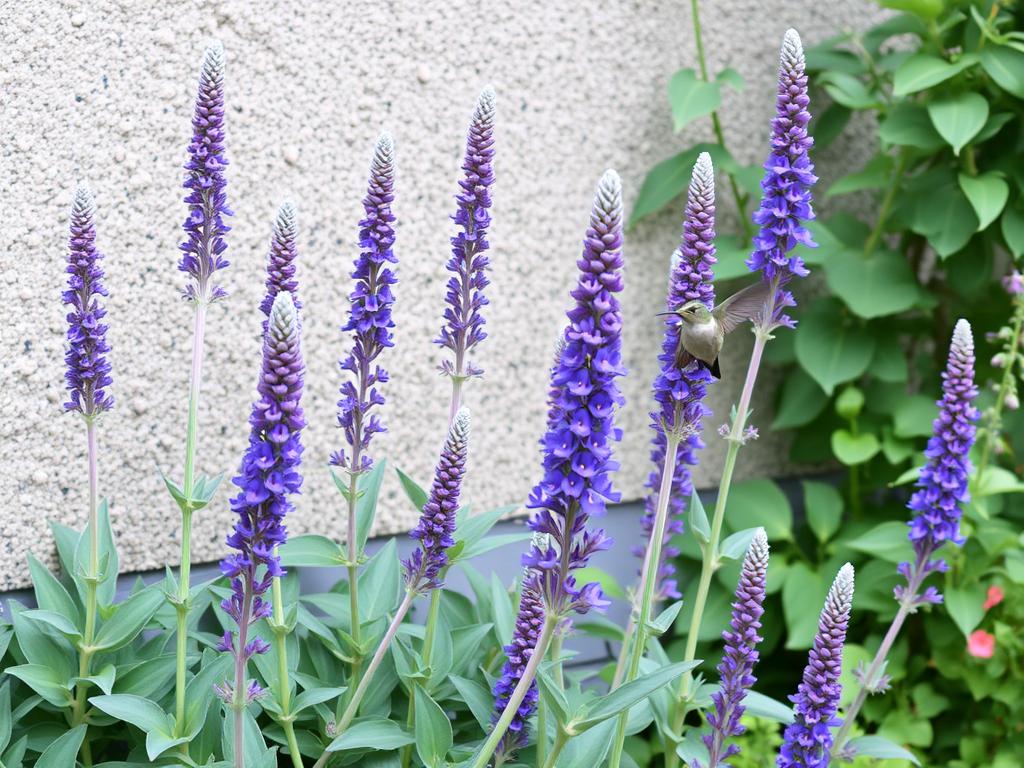
Salvia
This diverse genus includes many drought-resistant species with showy flower spikes that attract hummingbirds and butterflies. Their aromatic foliage adds sensory appeal to vertical gardens.
- Bloom color: Blue, purple, red, pink, white
- Sun requirements: Full sun to partial shade
- Drought tolerance: Very good
Salvias prefer lean soil and good air circulation. Prune back by one-third after the first flowering to encourage a second bloom cycle later in the season.
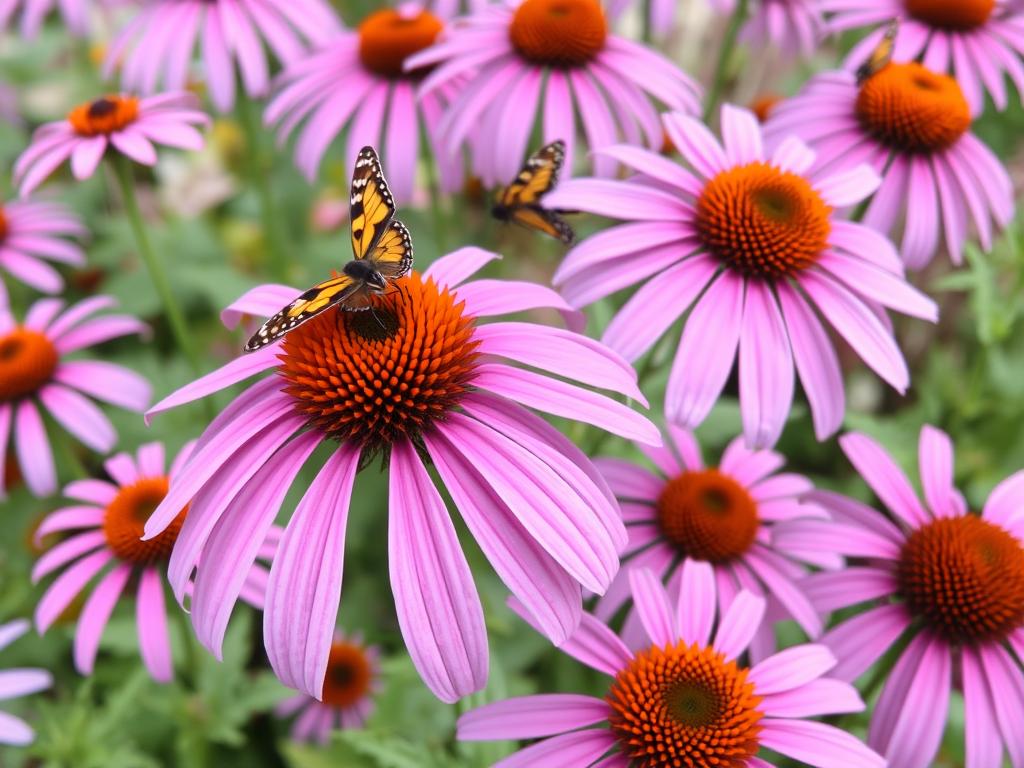
Coneflower (Echinacea)
These North American native plants produce daisy-like flowers with raised central cones. They’re not only drought-tolerant but also attract butterflies and provide winter interest with their seed heads.
- Bloom color: Purple, pink, white, yellow, orange
- Sun requirements: Full sun
- Drought tolerance: High
Coneflowers develop deep taproots, so place them in deeper pockets of your vertical garden. Leave seed heads intact through winter to feed birds and add visual interest.
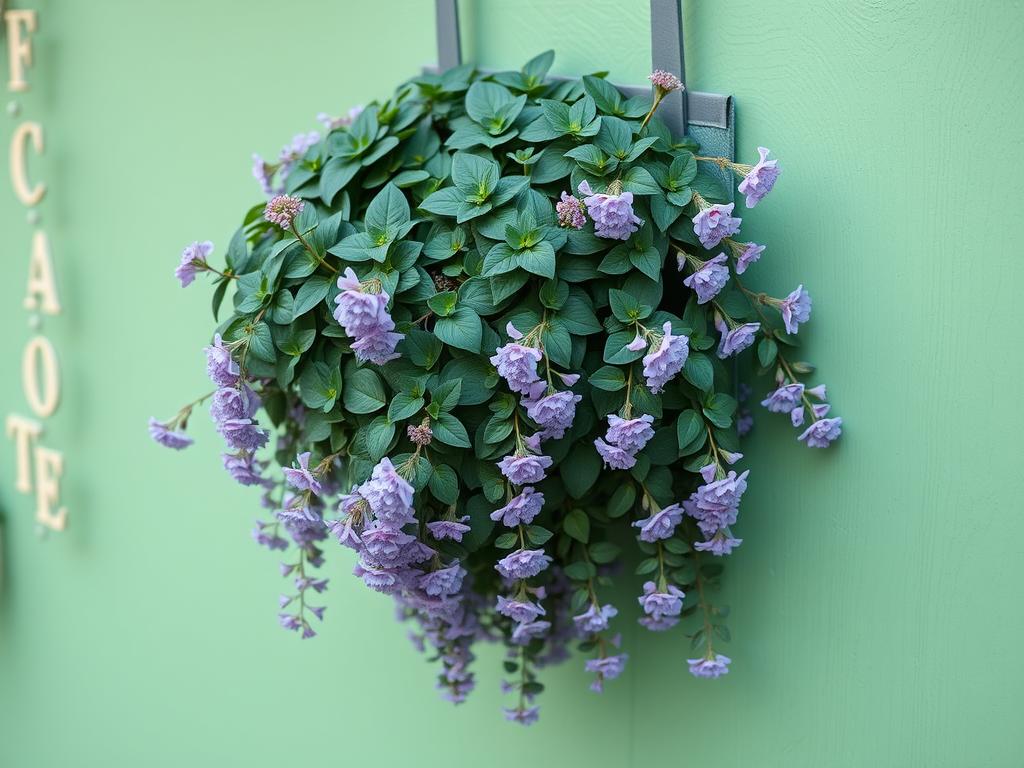
Verbena
With its trailing habit and clusters of small, colorful flowers, verbena is perfect for the edges of vertical gardens. It blooms prolifically from spring until frost with minimal care.
- Bloom color: Purple, pink, red, white
- Sun requirements: Full sun
- Drought tolerance: Good
Verbena benefits from occasional trimming to prevent legginess. Plant it where its cascading habit can be showcased, such as along the edges of your vertical garden.
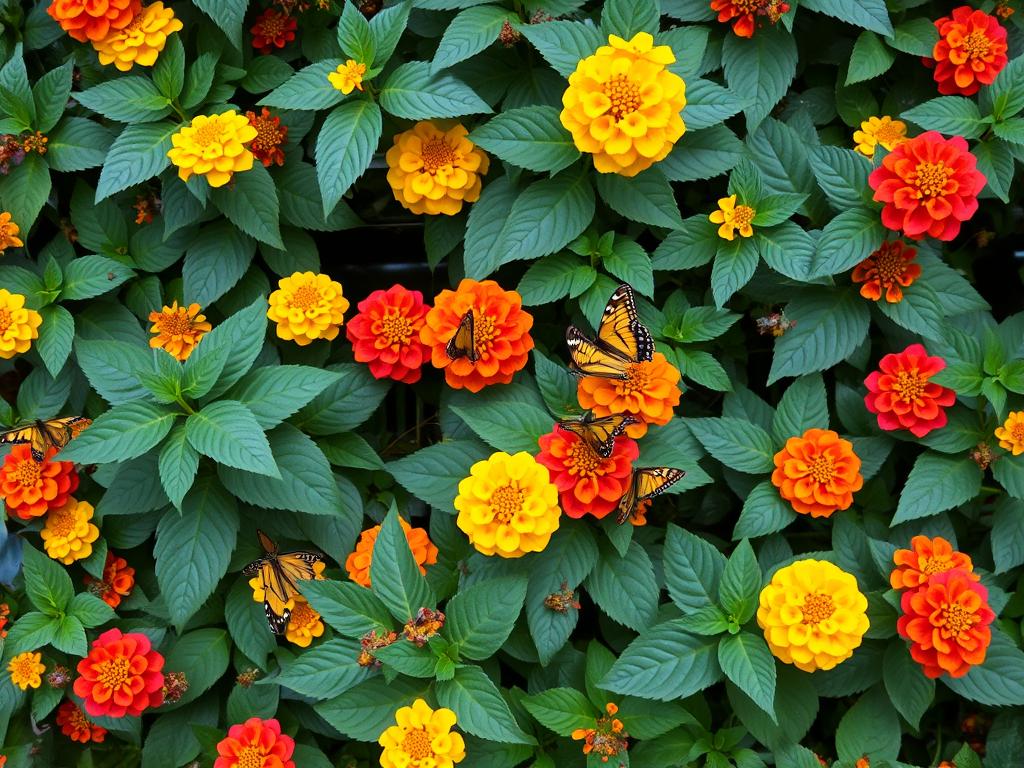
Lantana
This heat-loving perennial produces multicolored flower clusters that change hues as they age. Lantana is a butterfly magnet and thrives in the hottest, driest conditions.
- Bloom color: Yellow, orange, red, pink, purple, white (often in combination)
- Sun requirements: Full sun
- Drought tolerance: Excellent
Lantana can become woody over time, so prune it back in early spring to maintain a compact form. Some varieties have a trailing habit perfect for vertical garden edges.
Drought-Tolerant Annual Flowers
Annual flowers provide quick color and can be changed seasonally to refresh your vertical garden’s look. These drought-resistant varieties deliver maximum impact with minimal water.

Portulaca (Moss Rose)
This low-growing succulent annual produces an abundance of rose-like flowers that open in the sun and close at night. Its trailing habit makes it perfect for vertical garden edges.
- Bloom color: Pink, red, yellow, orange, white
- Sun requirements: Full sun
- Drought tolerance: Excellent
Portulaca self-seeds readily, so you may find volunteer plants appearing in your vertical garden year after year. No deadheading is required for continuous bloom.
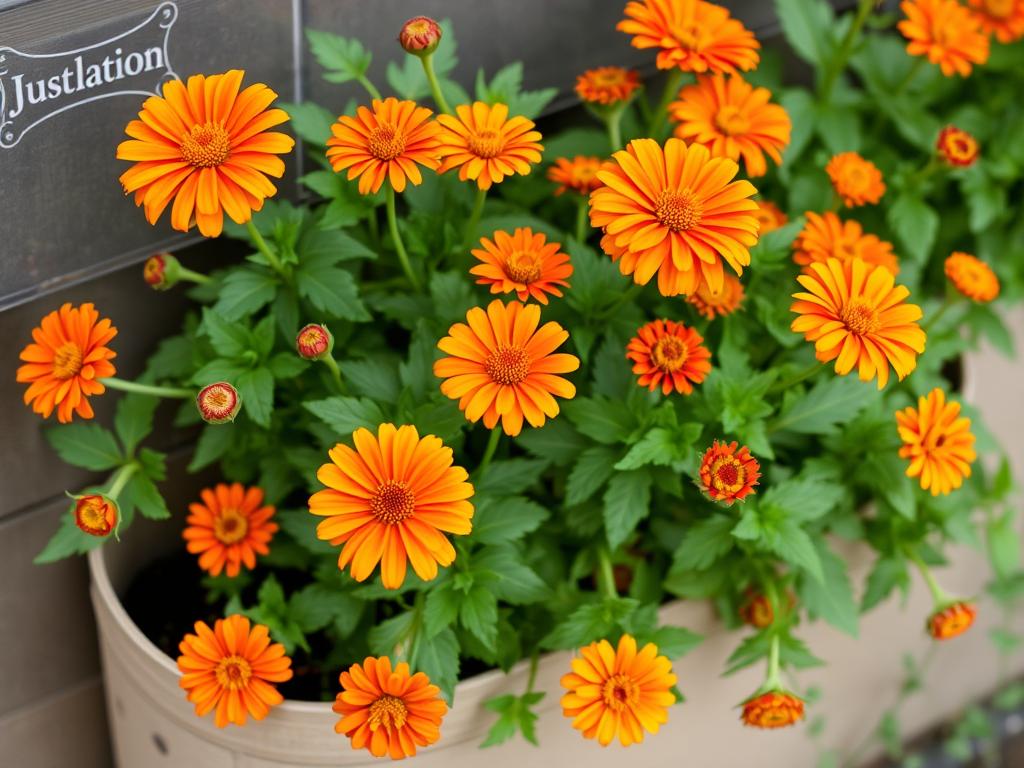
Zinnia
These easy-to-grow annuals produce bright, daisy-like flowers on sturdy stems. Newer compact varieties are well-suited to the limited space of vertical garden pockets.
- Bloom color: Red, orange, yellow, pink, purple, white
- Sun requirements: Full sun
- Drought tolerance: Good
Look for dwarf zinnia varieties like the ‘Profusion’ series for vertical gardens. Deadhead regularly to encourage continuous flowering throughout the summer.
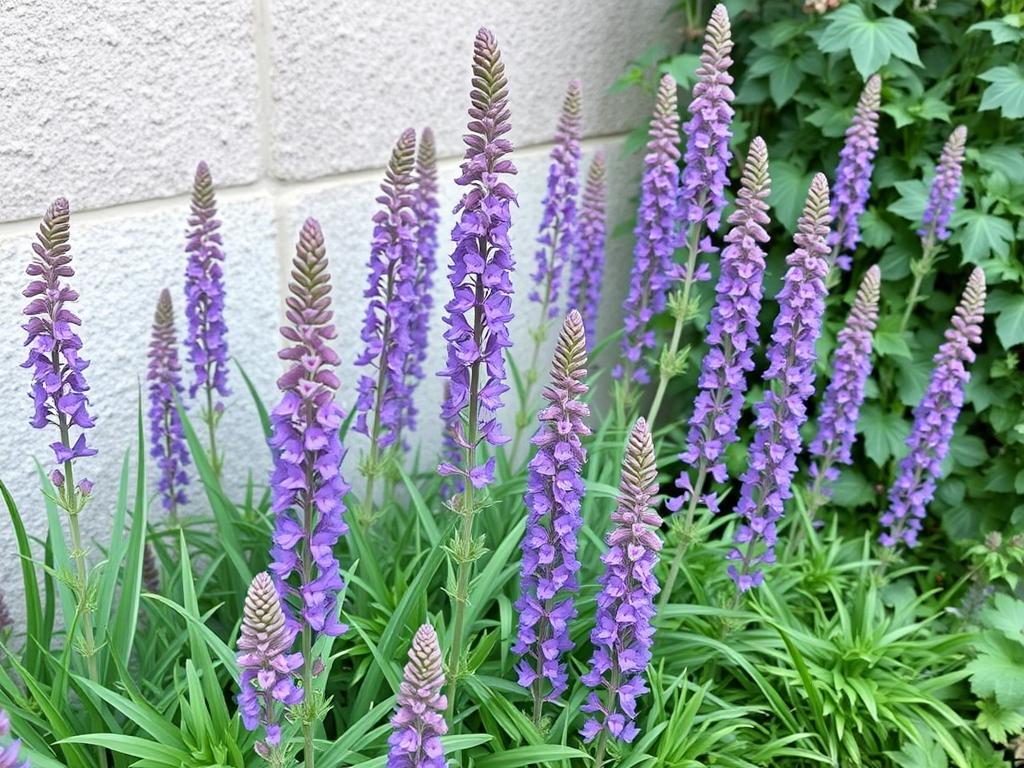
Angelonia (Summer Snapdragon)
Often called summer snapdragon, angelonia produces spikes of small, orchid-like flowers that thrive in heat and humidity. It maintains a neat, upright habit in vertical gardens.
- Bloom color: Purple, pink, white
- Sun requirements: Full sun
- Drought tolerance: Very good
Angelonia is self-cleaning, meaning it drops spent flowers naturally without requiring deadheading. This low-maintenance trait makes it ideal for vertical gardens.
Trailing Drought-Resistant Plants
Trailing plants add dynamic movement to vertical gardens, softening edges and creating a lush, cascading effect. These drought-tolerant varieties will spill beautifully from your living wall.
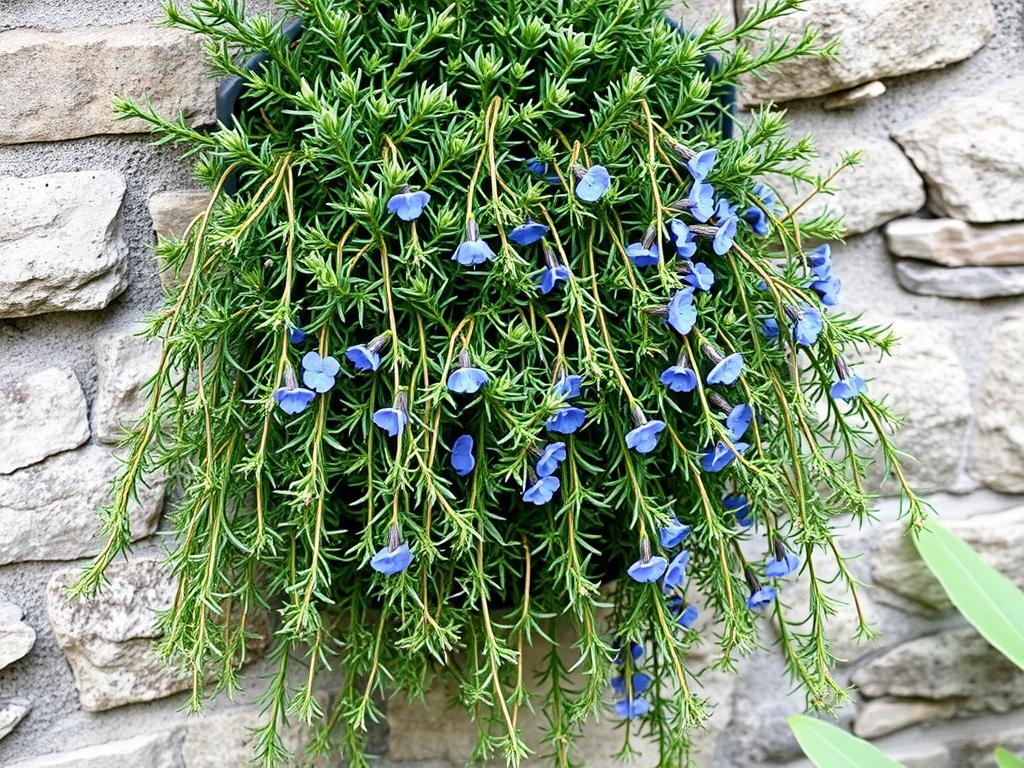
Trailing Rosemary
This aromatic herb produces small blue flowers among needle-like leaves. Beyond its ornamental value, you can harvest sprigs for cooking, making it a functional addition to vertical gardens.
- Bloom color: Blue
- Sun requirements: Full sun
- Drought tolerance: Excellent
Trailing rosemary can grow quite long over time, so position it where it has room to cascade. Prune after flowering to maintain a compact form and stimulate new growth.
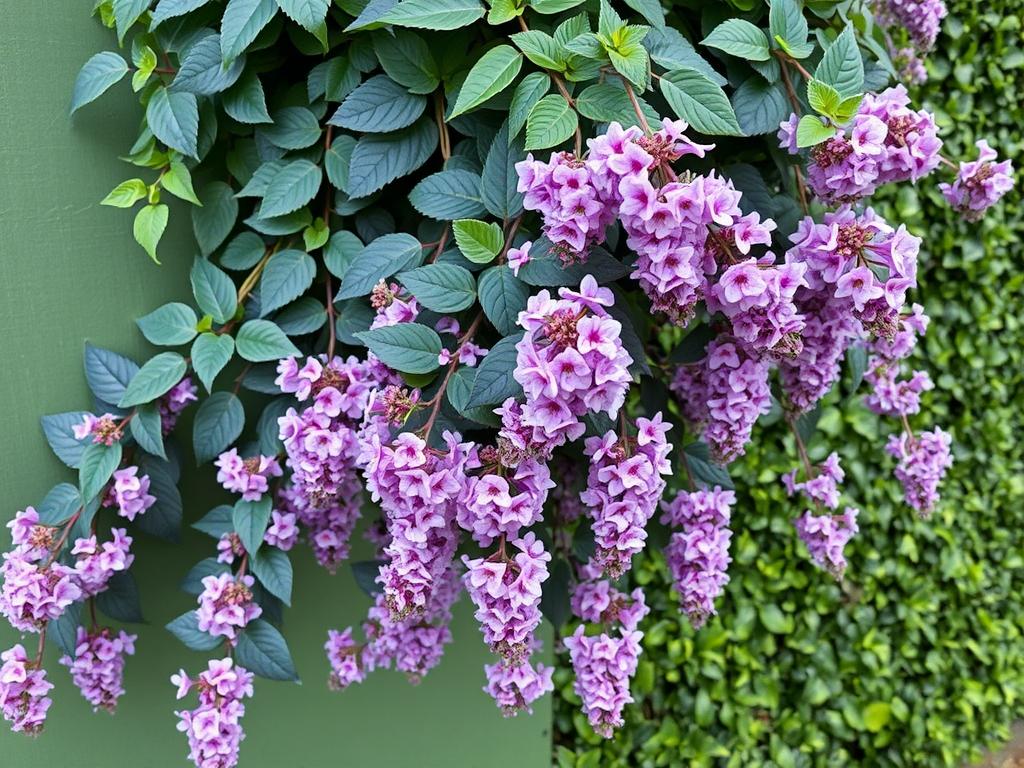
Trailing Lantana
Unlike its bushier relatives, trailing lantana has a spreading habit that makes it perfect for vertical gardens. It produces a profusion of colorful flower clusters that attract butterflies.
- Bloom color: Purple, white, pink, yellow
- Sun requirements: Full sun
- Drought tolerance: Excellent
Trailing lantana can spread up to 3 feet, so give it ample space in your vertical garden. It’s particularly effective when planted in the upper sections where it can cascade downward.
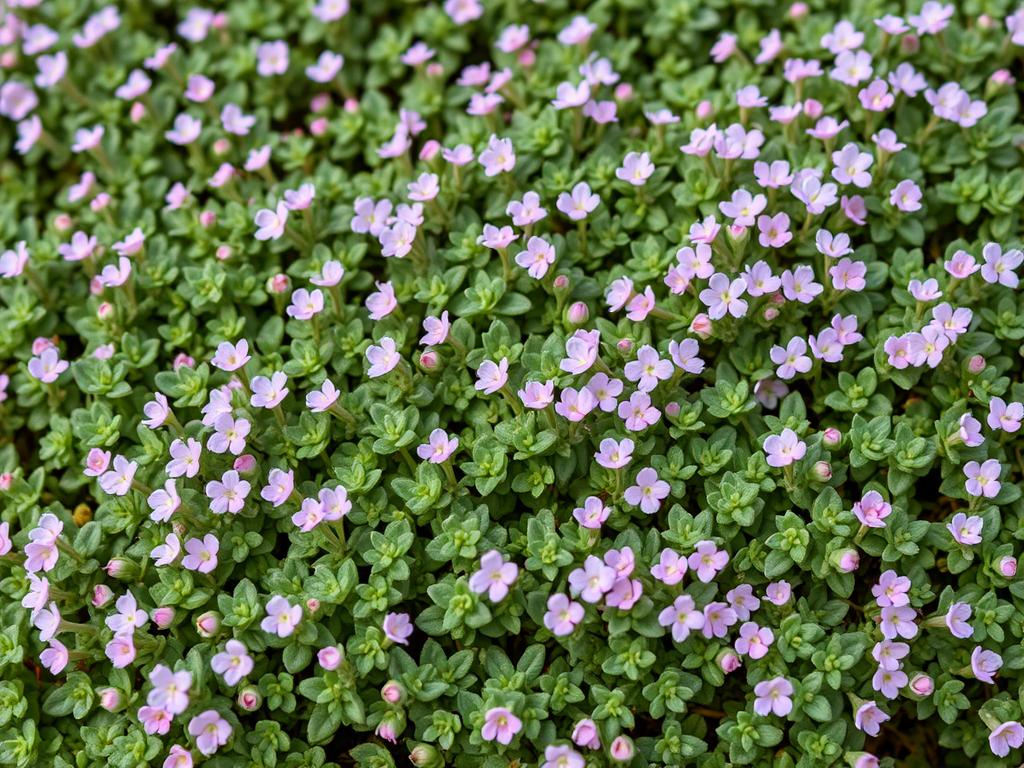
Creeping Thyme
This low-growing herb forms a mat of tiny, aromatic leaves covered with small flowers in summer. Its spreading habit makes it excellent for filling vertical garden pockets quickly.
- Bloom color: Pink, purple, white
- Sun requirements: Full sun
- Drought tolerance: High
Creeping thyme can be walked on and releases its fragrance when crushed. Trim it back after flowering to maintain its compact form and prevent woodiness.
Design Tips for Colorful Drought-Resistant Vertical Gardens

Creating a visually stunning vertical garden requires thoughtful design beyond simply selecting drought-resistant plants. Here are some design principles to elevate your living wall:
Layer Plants by Height and Texture
- Position taller plants like salvias and lavender toward the back or top of the garden
- Place medium-height plants like coneflowers and lantana in the middle sections
- Use trailing varieties like creeping thyme and portulaca along the edges
- Combine different leaf textures (fuzzy, smooth, needle-like) for visual interest
- Contrast fine-textured plants like yarrow with bold-leaved succulents
Create Color Harmony
- Choose a limited color palette (2-3 main colors) for a cohesive look
- Use complementary colors (opposite on the color wheel) for dramatic contrast
- Try analogous colors (adjacent on the color wheel) for a harmonious effect
- Include silver or gray foliage plants to act as “neutral” elements
- Consider how colors will appear together when plants are in bloom
Plan for Seasonal Interest
- Stagger bloom times to ensure color throughout the growing season
- Include plants with attractive seed heads or berries for fall and winter interest
- Select some plants with colorful or evergreen foliage for year-round appeal
- Group plants with similar bloom periods for maximum impact
- Consider adding small spring bulbs like species tulips or dwarf iris for early color
Remember that vertical gardens are viewed from a different perspective than traditional gardens. Plants that might get lost in a ground-level bed can become focal points when positioned at eye level in a vertical garden. Take advantage of this by showcasing plants with interesting details that might otherwise go unnoticed.
Care Guide for Drought-Resistant Vertical Gardens
Even drought-resistant plants need proper care to thrive in a vertical garden setting. Follow these guidelines to ensure your water-wise vertical garden flourishes:
Watering Strategy
- Establish properly: Water new plants thoroughly for the first 4-6 weeks until established, even drought-resistant varieties need time to develop their root systems
- Water deeply but infrequently: This encourages deeper root growth and greater drought resistance
- Monitor moisture levels: Vertical gardens can dry out faster than ground plantings, especially in windy locations
- Water early morning: This reduces evaporation and allows foliage to dry before evening
- Consider drip irrigation: Install a simple drip system with a timer for consistent, efficient watering
Soil and Fertilizing
- Use well-draining soil: Mix regular potting soil with perlite, pumice, or coarse sand to improve drainage
- Add water-retaining elements: Small amounts of coconut coir or water-storing crystals can help retain moisture without waterlogging
- Fertilize sparingly: Most drought-resistant plants prefer lean soil; over-fertilizing causes floppy growth
- Use slow-release fertilizer: Apply once in spring for steady nutrition without excess growth
- Consider compost tea: This gentle organic option provides nutrients without pushing excessive growth
Seasonal Maintenance
Spring
- Prune back any winter damage
- Apply slow-release fertilizer
- Check irrigation system
- Divide or replace overcrowded plants
- Add new plants as needed
Summer
- Monitor water needs during heat waves
- Deadhead spent flowers to encourage reblooming
- Trim back leggy growth
- Watch for pest issues
- Harvest herbs if included in your garden
Fall
- Reduce watering as temperatures cool
- Cut back perennials as they go dormant
- Leave ornamental seed heads for winter interest
- Check vertical garden structure for repairs
- Apply mulch to exposed soil surfaces
Winter
- Water only during extended dry periods
- Protect tender plants from extreme cold if necessary
- Plan additions or changes for spring
- Enjoy the structural elements of your garden
- Prune woody plants while dormant
Pro Tip: Install a moisture meter in your vertical garden to accurately monitor water needs. These inexpensive devices can help you avoid both under and overwatering, which is especially important in the unique growing environment of a vertical garden.
Troubleshooting Common Issues
Even with careful planning and plant selection, you may encounter challenges with your drought-resistant vertical garden. Here are solutions to common problems:
Plants wilting despite drought tolerance
Even drought-resistant plants need regular water until established. If mature plants are wilting, check for:
- Inadequate initial watering (roots never developed properly)
- Extremely hot or windy conditions exceeding plant tolerance
- Compacted soil preventing proper root growth
- Insufficient soil volume in vertical garden pockets
Solution: Water deeply, add water-retaining amendments to soil, or replace with even more drought-tolerant species.
Few or no flowers on plants
Lack of blooming in drought-resistant plants may be caused by:
- Insufficient sunlight (most flowering drought-resistant plants need full sun)
- Improper pruning (removing flower buds)
- Too much nitrogen fertilizer (promoting foliage over flowers)
- Stress from extreme drought
Solution: Ensure plants receive adequate sunlight, use low-nitrogen fertilizer, and provide minimal water during bud formation.
Plants becoming leggy or sparse
This common issue in vertical gardens can be caused by:
- Insufficient light causing plants to stretch
- Overcrowding as plants mature
- Natural aging of perennial plants
- Lack of regular pruning to encourage bushiness
Solution: Prune plants back by one-third to encourage branching, ensure adequate light, and divide or replace overcrowded specimens.
Soil washing out of vertical garden pockets
This structural issue can undermine plant health:
- Water running too quickly through the system
- Insufficient plant roots to hold soil
- Erosion from heavy rain or irrigation
- Inadequate pocket design
Solution: Add coconut coir to soil mix for better cohesion, establish ground cover plants to hold soil, adjust irrigation to gentler flow, and consider adding small rocks at pocket openings.
Conclusion: Creating Your Drought-Resistant Flowering Vertical Garden

Designing a vertical garden with flowering drought-resistant plants allows you to enjoy beautiful blooms while conserving water and reducing maintenance. By selecting plants adapted to dry conditions, you’re creating a sustainable garden that works with nature rather than against it.
Start with a few key species that match your climate and sun exposure, then expand your palette as you gain confidence. Remember that even drought-resistant plants need regular care during their establishment period before they develop their full water-wise potential.
Whether you’re creating a small living wall on an apartment balcony or a large-scale vertical installation, these flowering drought-resistant plants will help you achieve a stunning, sustainable display that brings color, texture, and life to vertical spaces without excessive water use.
“The best time to plant a garden was 20 years ago. The second best time is now.”
Get Weekly Gardening Tips
Join our community of vertical garden enthusiasts and receive expert advice, seasonal planting guides, and water-saving techniques delivered to your inbox.
Grow Your Gardening Knowledge
Subscribe to our newsletter for seasonal planting guides, vertical gardening tips, and exclusive content delivered straight to your inbox.
Stay Connected with Our Gardening Community
Join thousands of vertical gardening enthusiasts receiving our weekly tips, seasonal planting guides, and exclusive content.
Will is a vertical gardening enthusiast and sustainable cultivation specialist with a passion for helping people grow fresh food in small spaces and dry climates. With years of hands-on experience testing smart irrigation systems, optimizing urban gardens, and exploring eco-friendly solutions, this author shares clear, practical tips to turn any corner into a productive garden. Whether on a sunny balcony or in a compact backyard, Will helps readers save water, maximize space, and enjoy healthy harvests year-round. When not tending to his plants, you’ll find him sipping herbal tea and sketching ideas for new sustainable projects.

